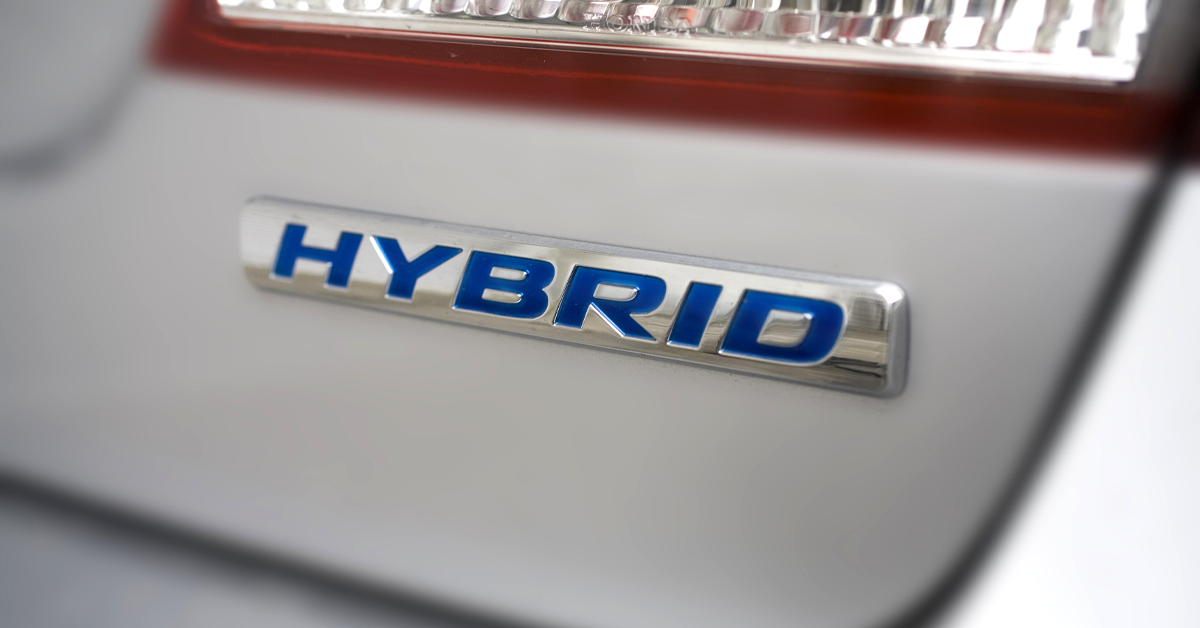Interest and adoption of alternative fuel vehicles has never been higher. In 2023, there were 1.2 million electric vehicles sold in the US, accounting for 7.6% of new cars sold, and this number is expected to exceed 10% this year. However, as new EV drivers navigate challenges with charging, technology and expectations, more buyers are turning to hybrids. Hybrid vehicles have both an internal combustion engine and an electric motor but only accept gasoline as fuel. While plug-in hybrids can accept both gasoline and an electric charge. In fact, 2023 hybrid vehicle sales hit a record high with over 1 million vehicles sold plus another 148K plug-in hybrid sales. With more than 25 years of experience in hybrid support, we lead the industry in understanding the needs of hybrids and how best to support them.
New technology adoption can be hard (and confusing), plus uncertainty and fear of unexpected costs can cause friction.
Today, most drivers are comfortable with hybrids and according to a recent survey, the reliability is considered the highest of all drivetrains. However, when hybrids were first introduced there was uncertainty and confusion associated with these models. They were different - they made almost no noise when running in electric mode which some viewed as a safety issue. They typically got better mileage in city streets instead of highway driving, the opposite of combustion engines. They also included new to market features, in a lower price point vehicle, like smart keys. Did you know that this all was so novel at the time that vehicles included a set of instructions that could be handed to a valet or guest driver?

There were also tremendous concerns about the hybrid battery including how long it would last and how much it would cost to replace. There are still concerns to this day around servicing. Many mechanics are less familiar with the technology and less comfortable. However, despite this friction, initial feedback was overwhelmingly positive, leading to long wait lists, above-sticker pricing and even adoption in Hollywood circles. If this all sounds familiar, it's because EVs are following a similar path.
All roadside assistance requires technology, scale and network but each new tech introduces its own twist.
First - there’s frequency. Drivers of alternative fuel vehicles report challenges with their vehicle more often than those with conventional combustion engines (ICE), about 15% more for both hybrids and electric vehicles. (Agero Consumer Benchmark 2023).
Second - customer experience. With any new process, there are unknowns which can lead to delays and impact customer experience. Today, the roadside experience for EV drivers lags behind as new needs are identified and new services defined. We’ve taken our learnings from 25 years of hybrid support and applied it to our EV strategy. In the past year, our clients that have invested in the electric experience have seen their EV NPS climb more than 10% and meet or even exceed the experience of their ICE customers.
Third - types of events. The big difference between hybrid support and ICE is the battery jump. The batteries typically used in hybrids (and EVs) are smaller and lower in capacity when compared with ICE vehicles. In addition, they are cycled more often in the course of operating the vehicle and this shortens the battery life. All this means that the likelihood of a dead battery on a hybrid is higher and this is reflected in our roadside data - there are nearly 40% more battery jumps for hybrids.
For EVs, the big difference is the tires. Tows are required for flat tires 2-3X more often than with ICE vehicles. This is primarily because most EVs don't have a spare, which turns a simple tire change can turn into a lengthy tow. Agero is exploring innovative new solutions to help address this and other EV needs.

We’ve helped turn hybrids from “new” into “most reliable” - and we’ll help do the same for EVs.
Today, hybrid vehicles are considered the most reliable vehicles and their roadside needs and services are well understood, leading to a strong customer experience which is comparable to ICE events. However, electric vehicles are still relatively new, and their roadside needs are as well. But by working with our clients and their customers to structure the right support, we’ve made significant strides in delivering the electric vehicle experience - and we are just getting started! Through provider training, new services and built-in expertise, we will elevate the EV experience just as we did with hybrids.




 Dan Reimel is the Roadside Product Lead at Agero. He oversees core roadside product management, including development of novel services to meet changing vehicle needs. Dan joined the team in 2022. Prior to Agero, Dan spent more than 10 years in product management and customer experience at leading luxury automotive brands. In his spare time, Dan enjoys traveling to new places, cooking, outdoor sports, and hiking with his dog Henry. Dan has a BS from Ramapo College of New Jersey.
Dan Reimel is the Roadside Product Lead at Agero. He oversees core roadside product management, including development of novel services to meet changing vehicle needs. Dan joined the team in 2022. Prior to Agero, Dan spent more than 10 years in product management and customer experience at leading luxury automotive brands. In his spare time, Dan enjoys traveling to new places, cooking, outdoor sports, and hiking with his dog Henry. Dan has a BS from Ramapo College of New Jersey.